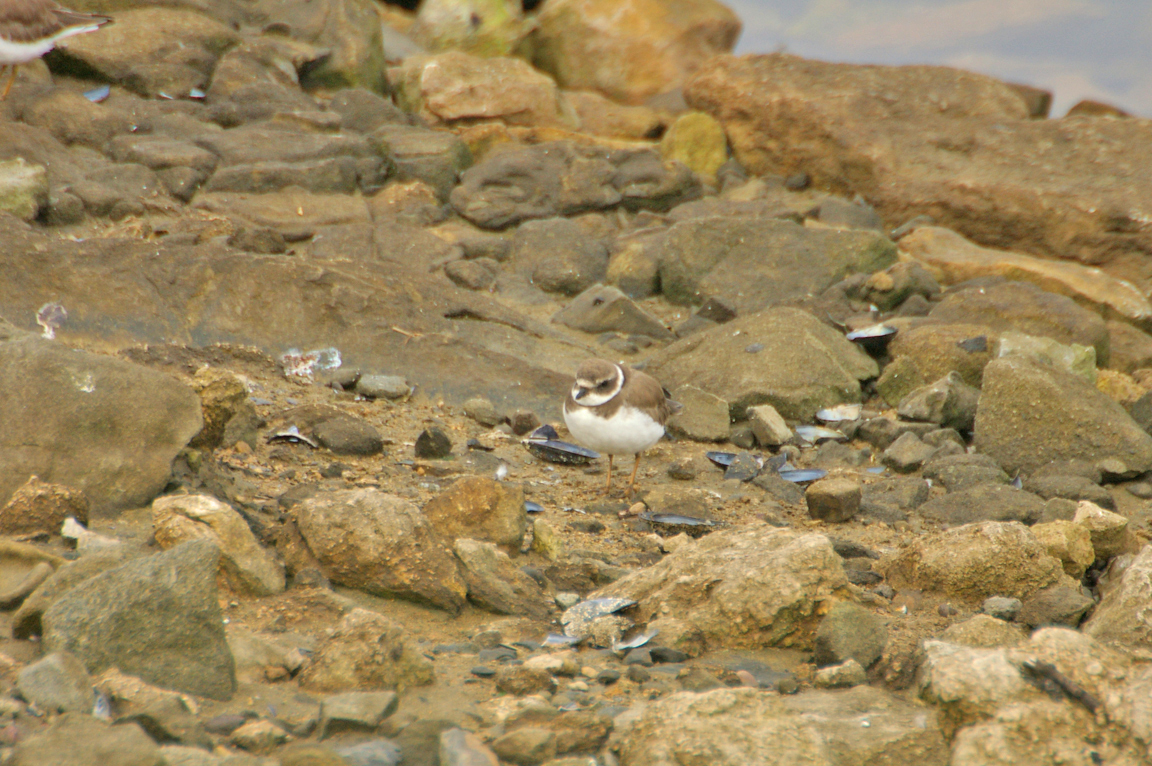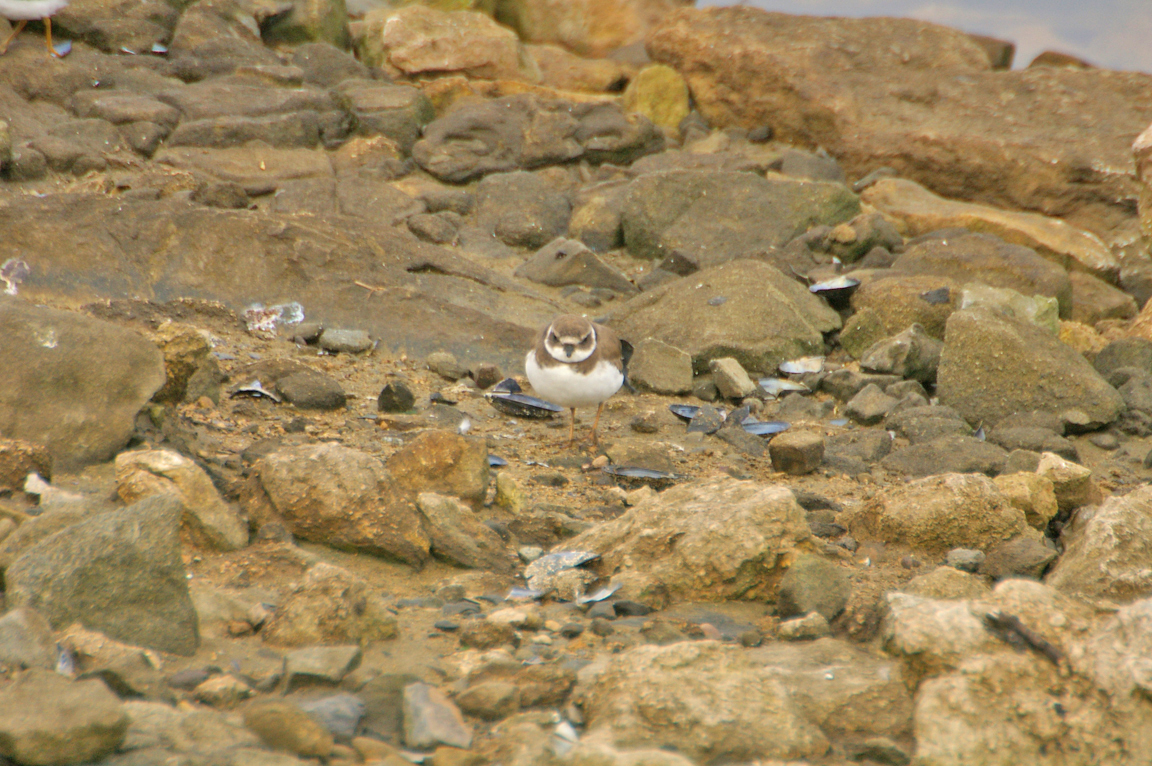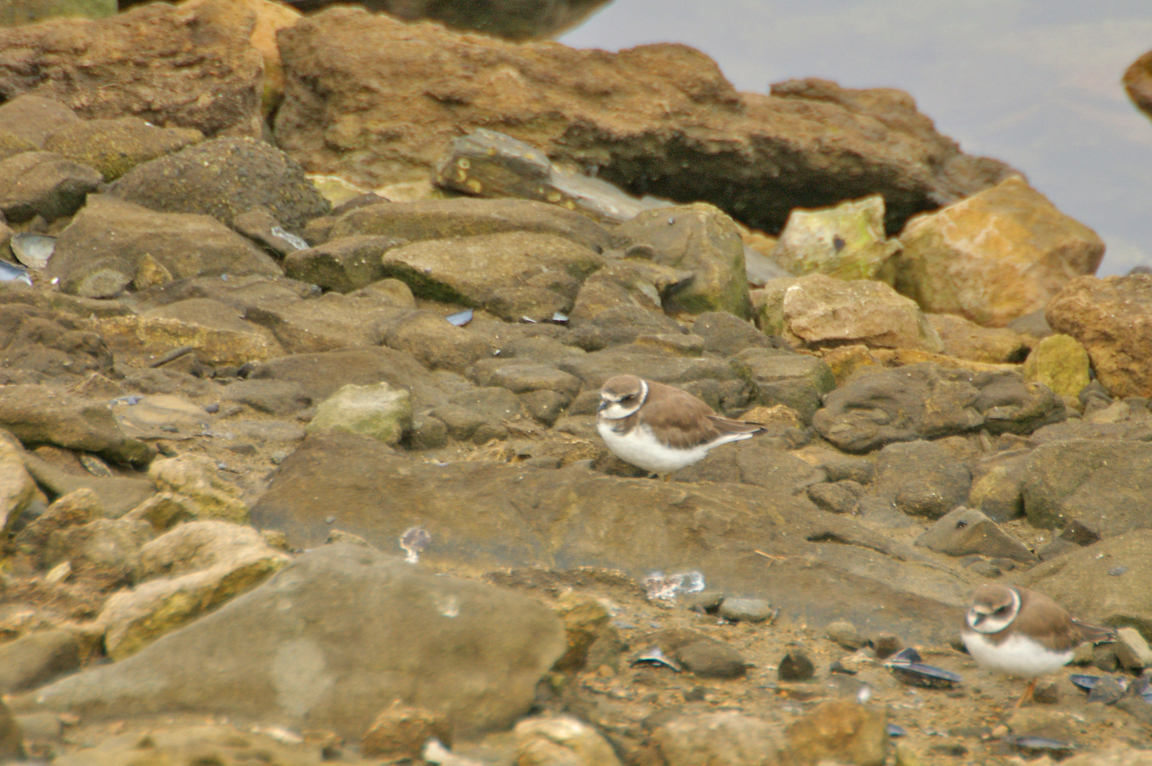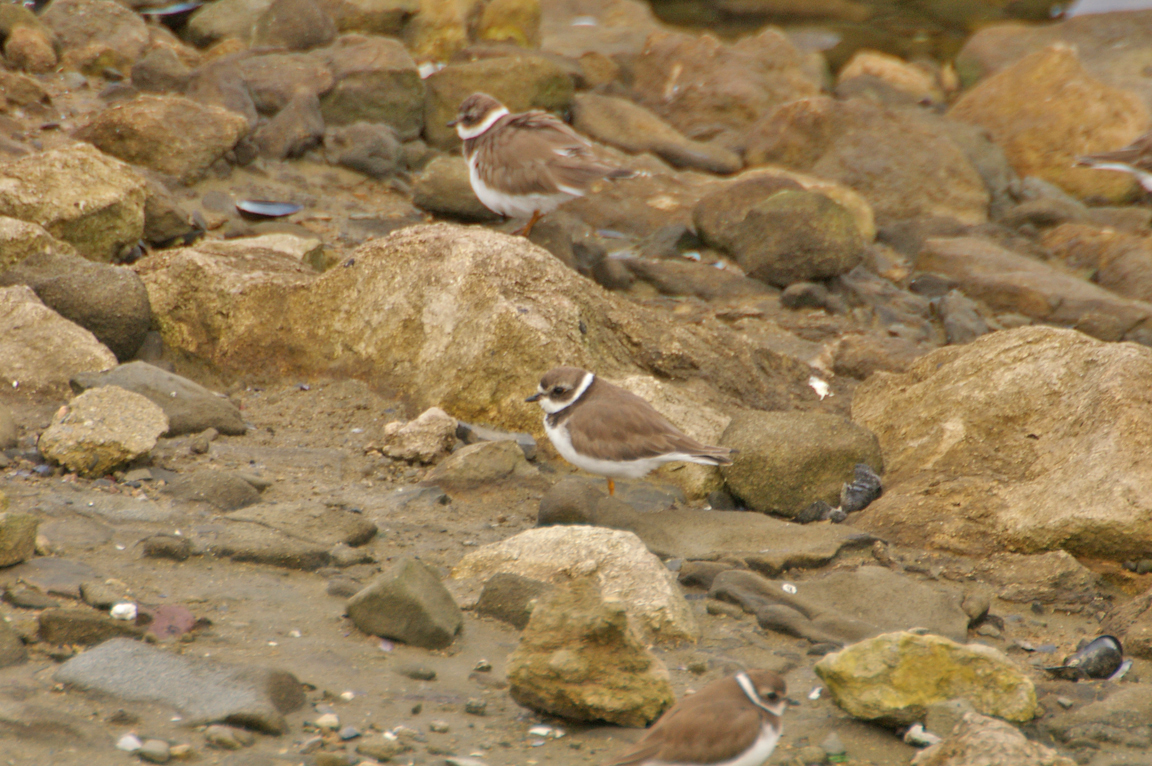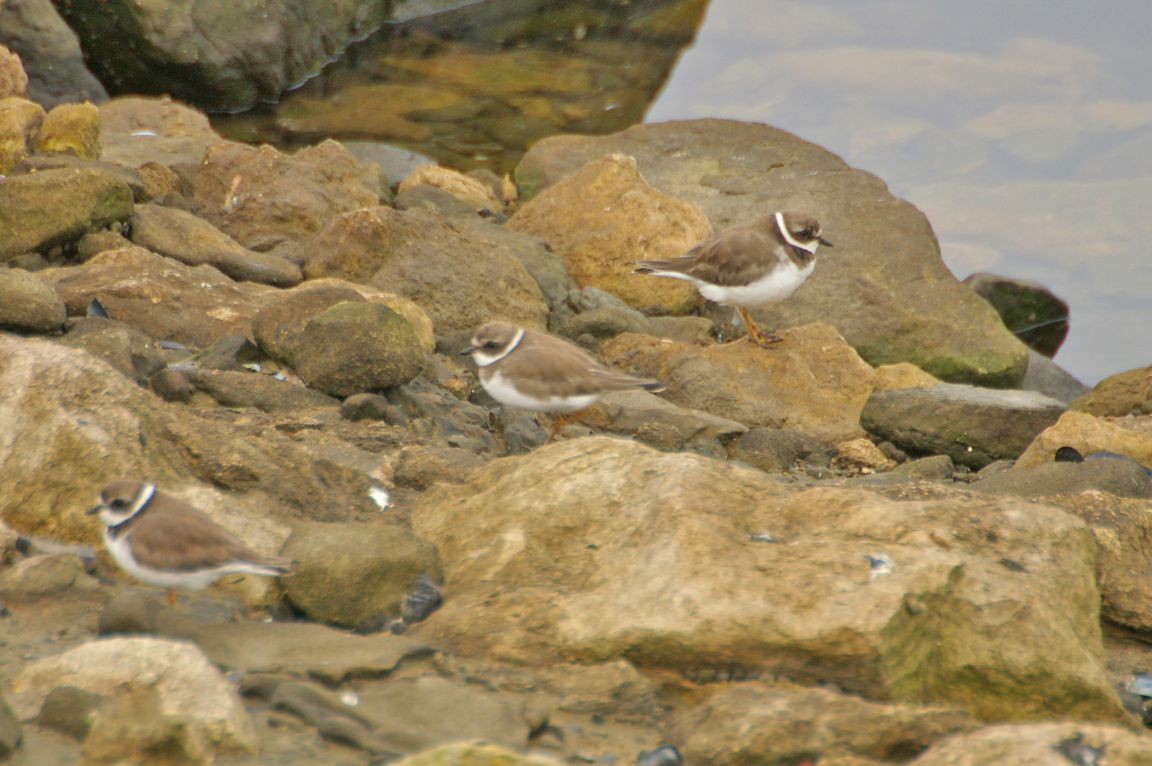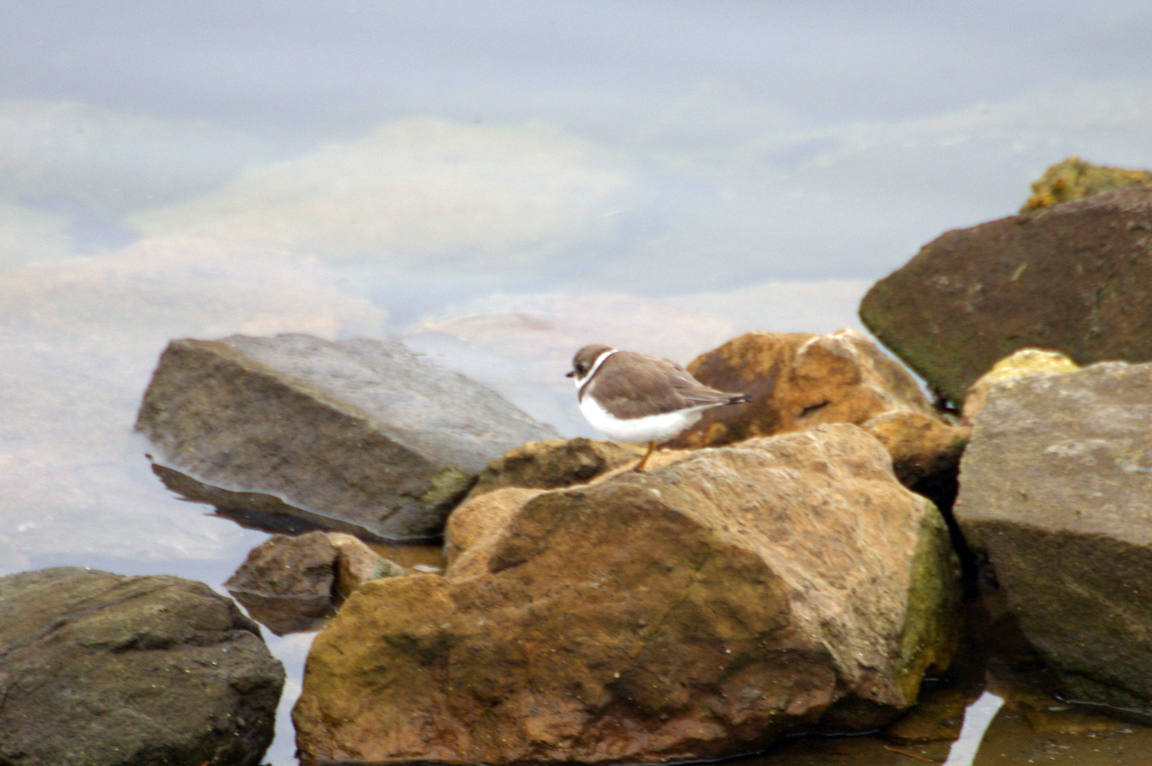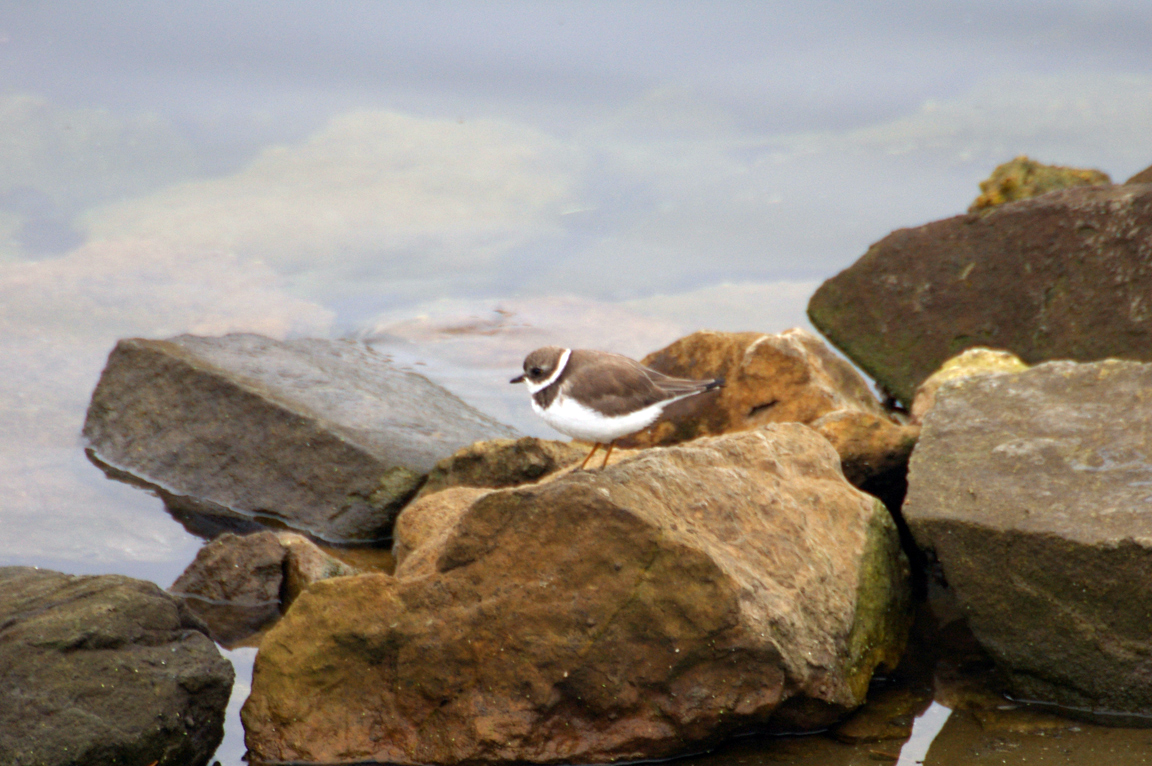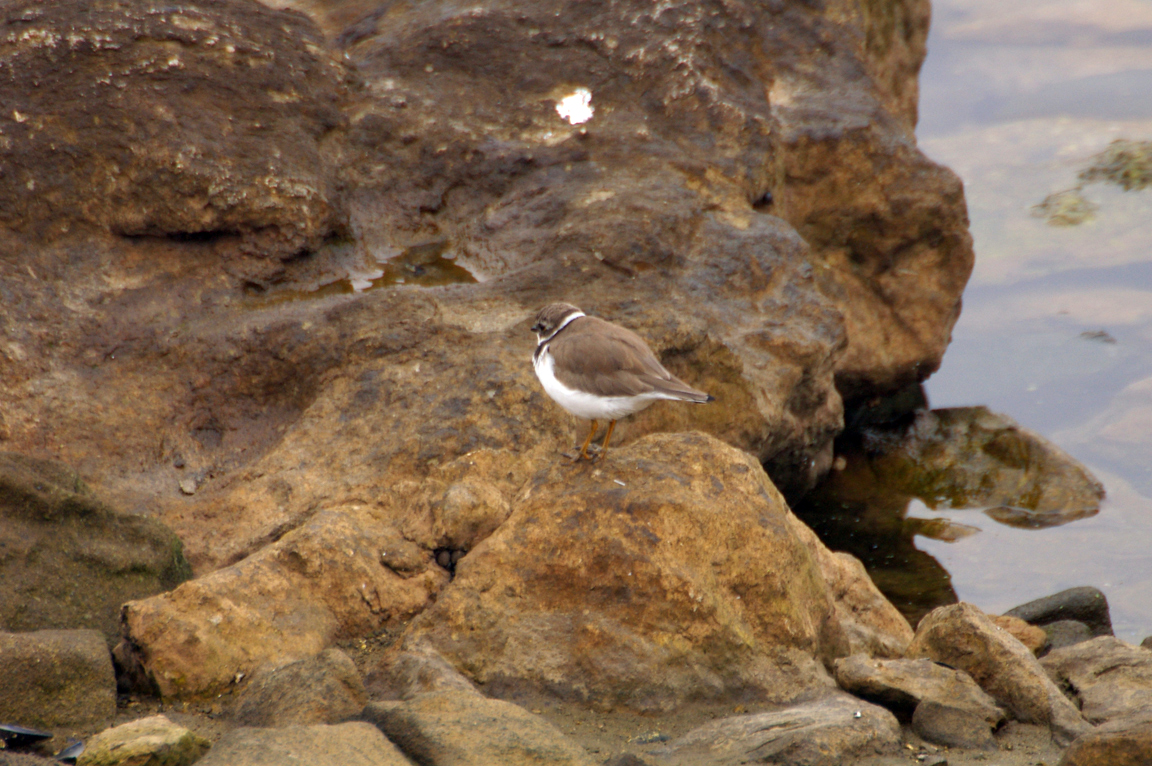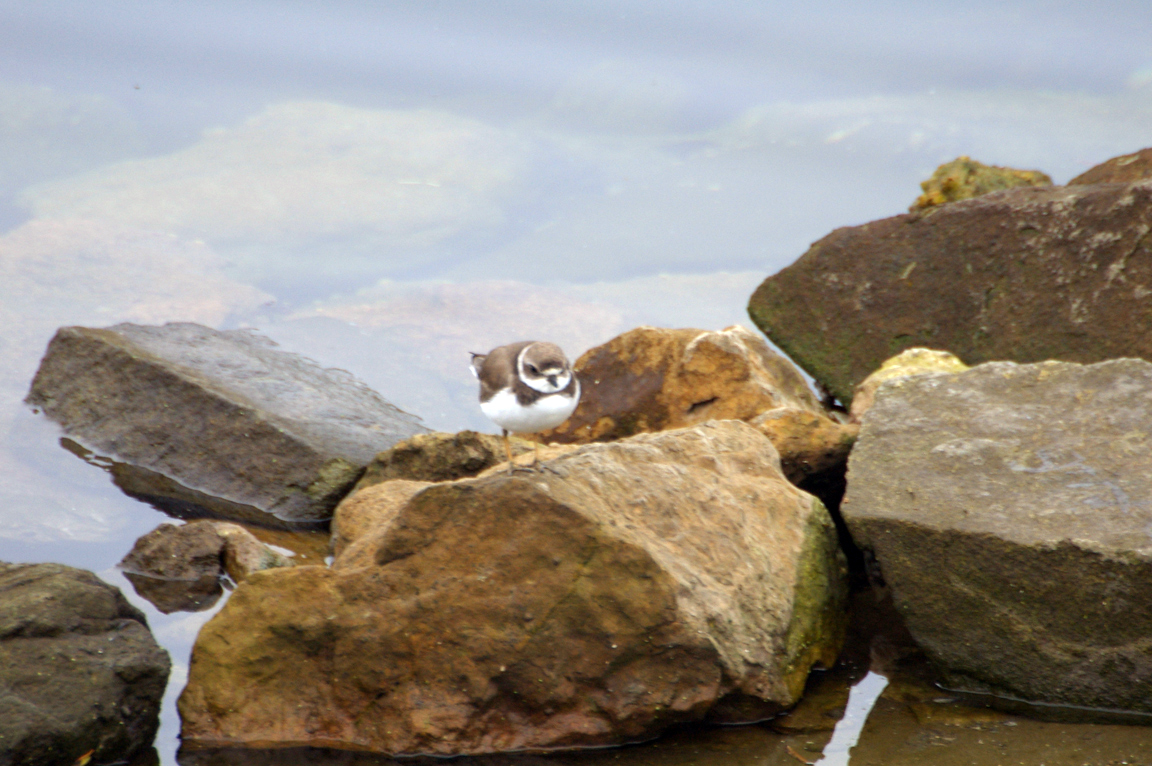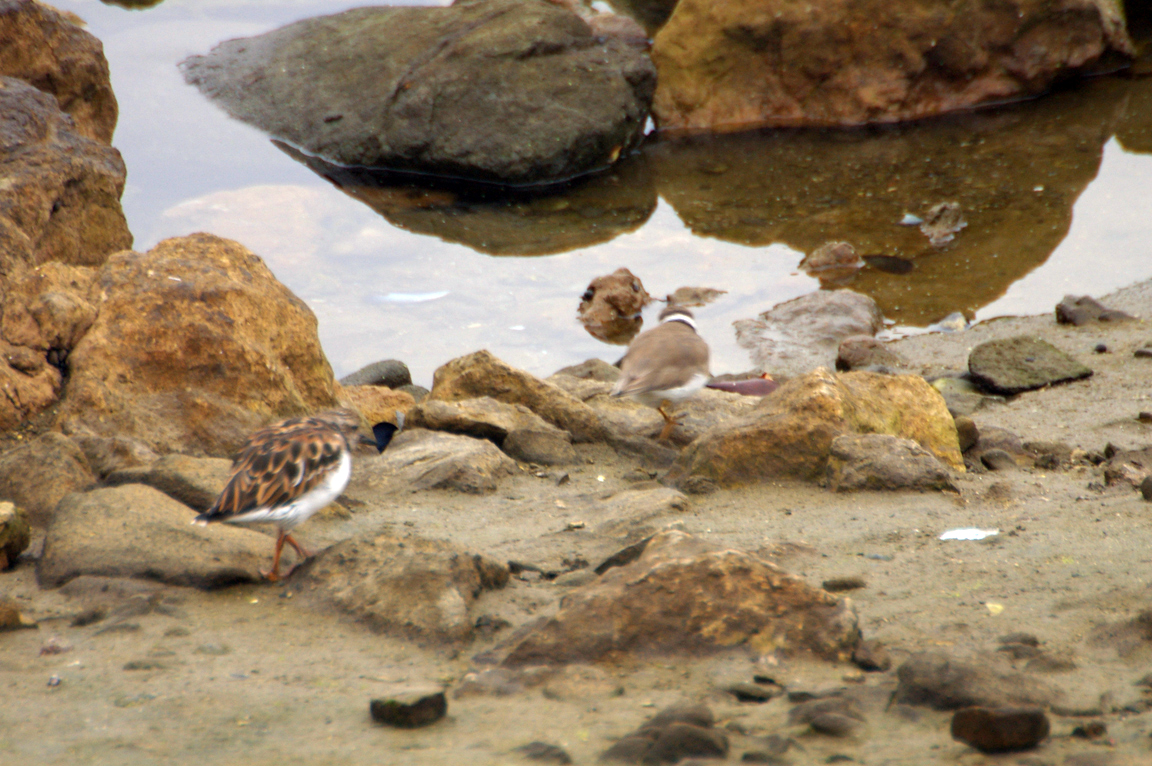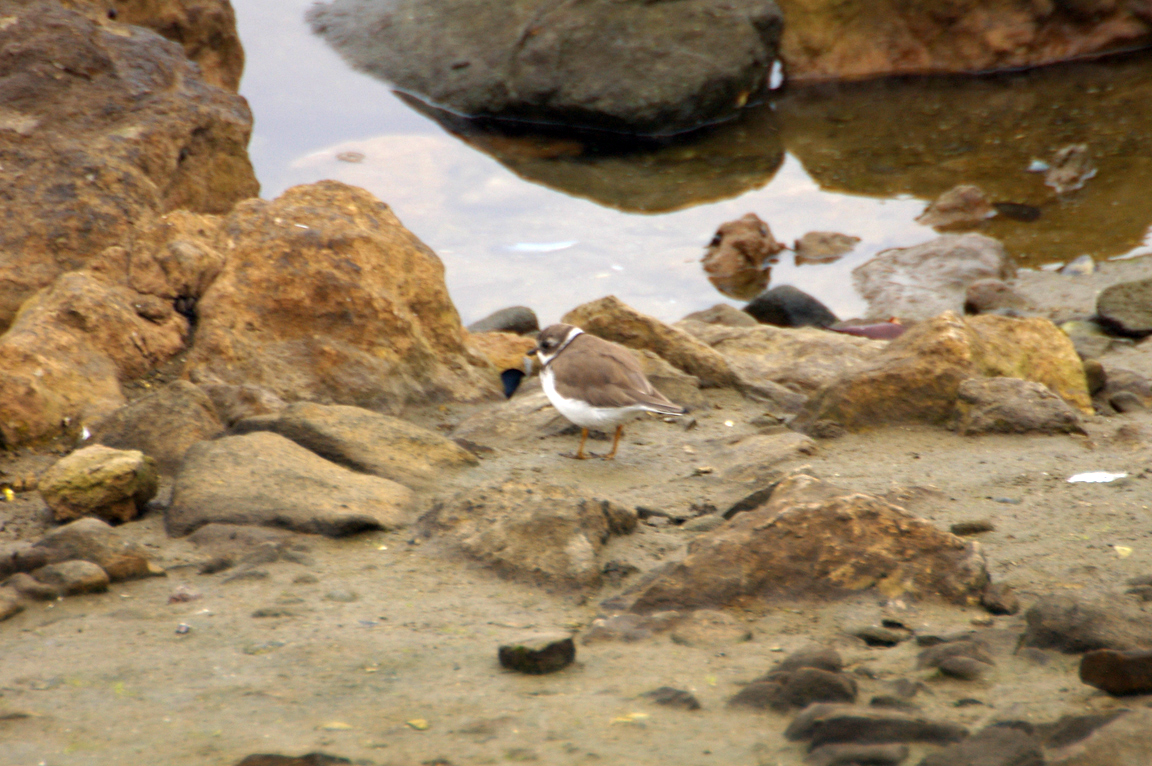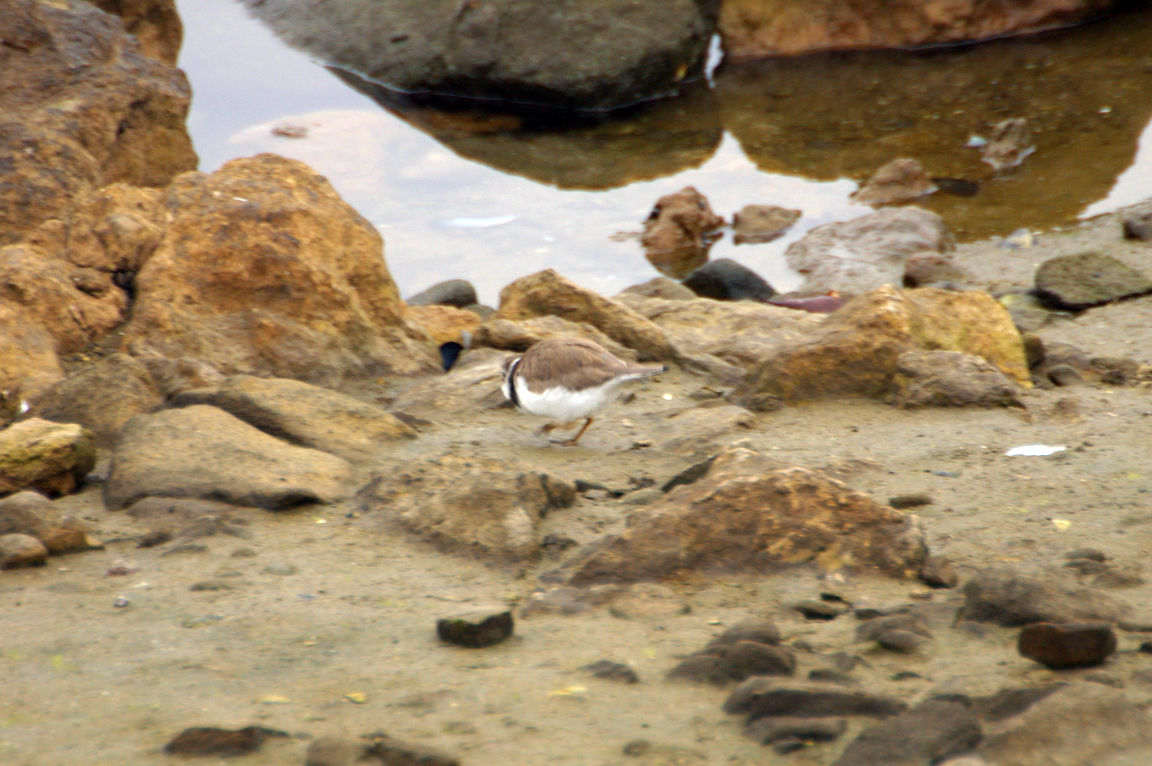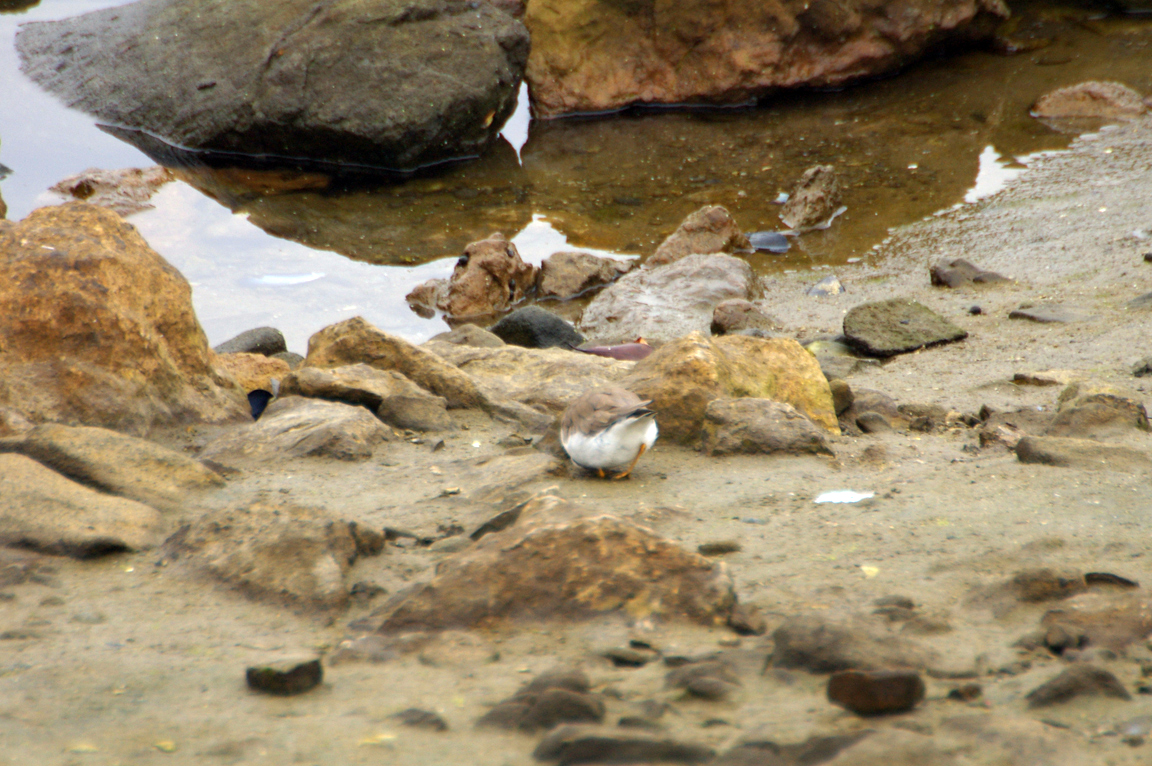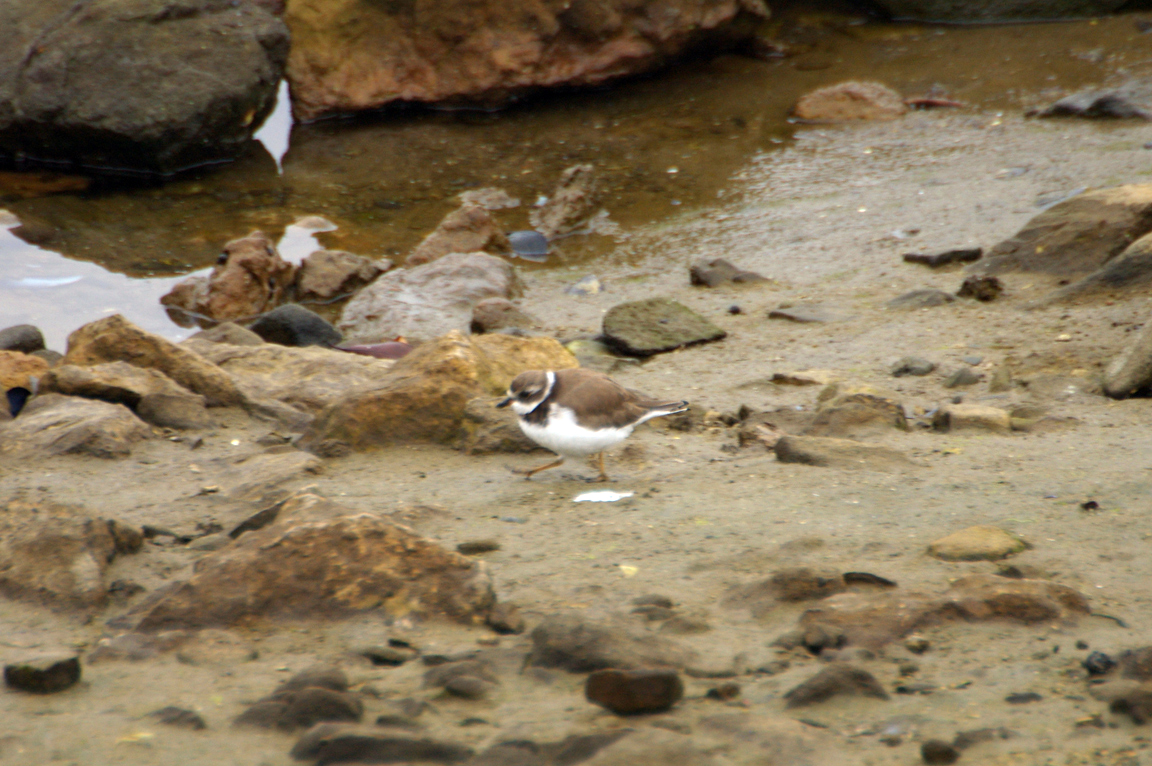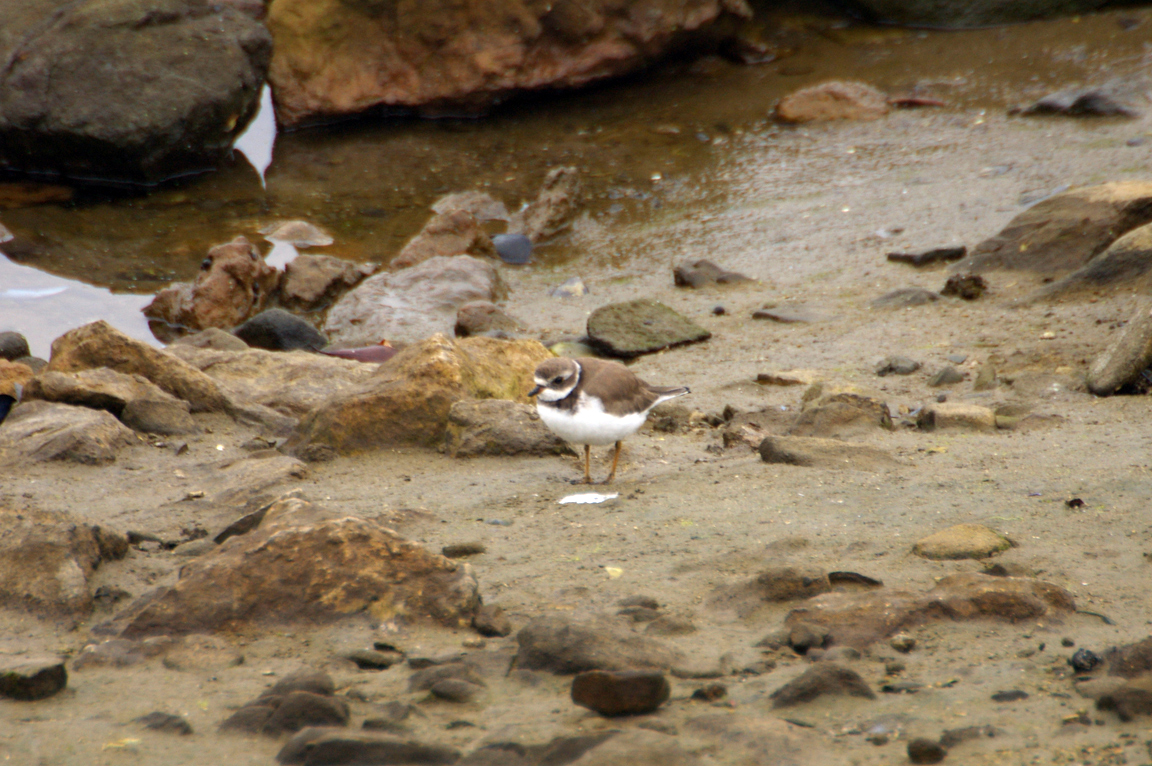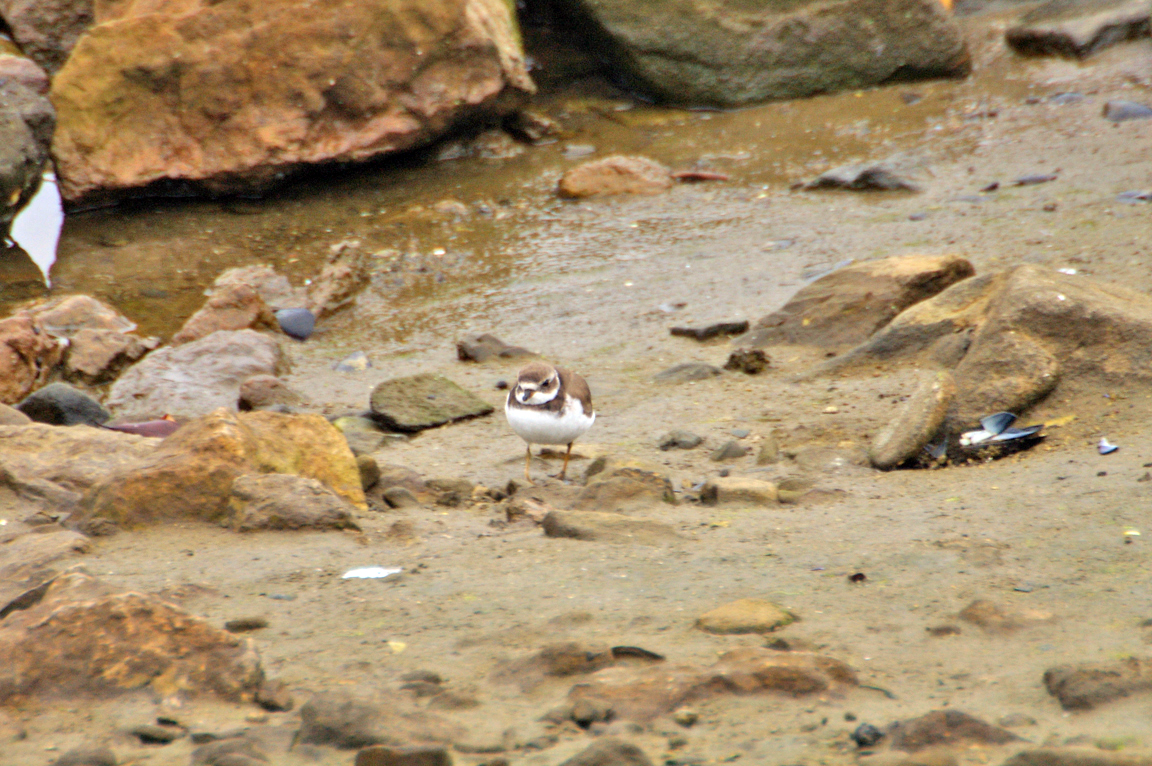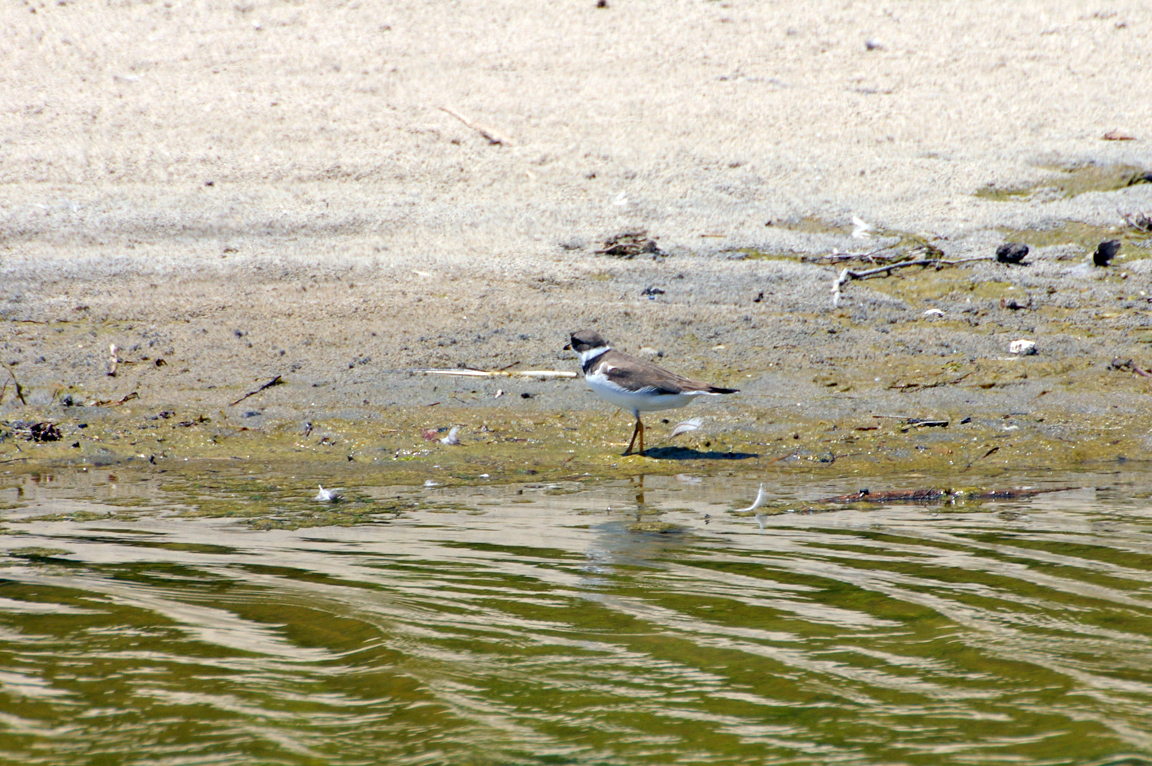|
|
|
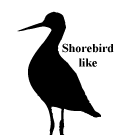 |
Semipalmated Plover
|
| Charadrius semipalmatus | |
A small dark shorebird with a single band across its chest, the Semipalmated Plover is the most common plover seen on migration in most areas.
Interesting Information
-
The Semipalmated Plover has been seen to swim short distances across small water channels during foraging while on migration. Chicks also swim short distances to follow parents to small islets on shallow lakes.
-
The Semipalmated Plover is the most common plover seen on migration in most areas.
-
The term "semipalmated" refers to its partly webbed feet.
-
A group of plovers has many collective nouns, including a "brace", "congregation", "deceit", "ponderance" and "wing" of plovers.
Description
Adult Description
-
Small shorebird.
-
Legs moderately long.
-
Neck short.
-
Back brown.
-
Underparts white with one thick black or brown band on chest.
-
Legs yellowish.
-
Length Range: 17-19 cm (6.5-7.5 in)
-
Weight: 48 g (1.7 oz)
-
Size: Small (5 - 9 in)
-
Color Primary: Brown
-
Underparts: White with dark-brown breast band.
-
Upperparts: Gray-brown
-
Back Pattern: Solid
-
Belly Pattern: Solid
-
Breast Pattern: No Data
Sex Differences
Female slightly drabber
Immature
Similar to adult, but with duller markings and pale scaling on back.
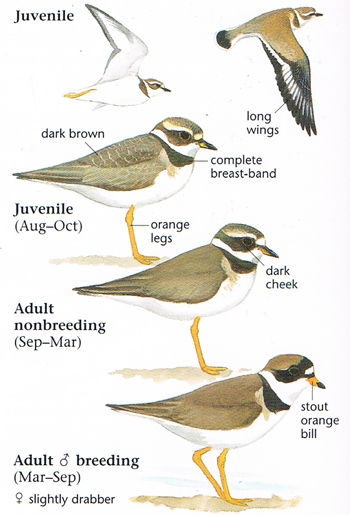
Photo taken from: The Sibley Field Guide by David Allen Sibley
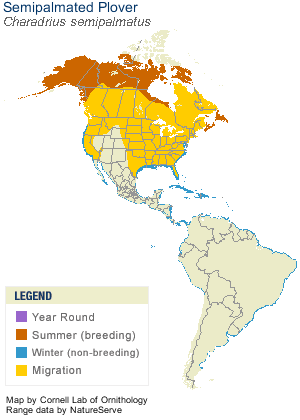
© 2003 Cornell Lab of Ornithology
|
Habitat |
|
Semipalmated Plover: Breeds on sandy or mossy tundra from Alaska to Newfoundland and Nova Scotia. Spends winters on mudflats, salt marshes, and lakeshores along coastal California and the Carolinas south. |
|
Behavior |
|
Searches for prey visually. Runs several steps, stops, stares, and then pecks or quickly snatches at prey. |
|
Food |
|
Semipalmated Plover: Eats insects, crustaceans, and mollusks; forages on mudflats or in shallow water, running and scanning for food in short bursts. |
Taxonomy
| Kingdom: | Animalia |
| Phylum: | Chordata |
| Subphylum: | Vertebrata |
| Class: | Aves |
| Order: | Charadriiformes |
| Family: | Charadriidae |
| Genus: | Charadrius |
| Species: | Charadrius semipalmatus |
Similar Species |
|
|
Bird Sound |
|
A short two-noted whistle, "chu-wee," with second note higher. |
|
Eggs look like this |
|
Photo taken from: ARCTOS Collaborative Collection Management Solution |
